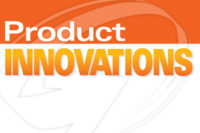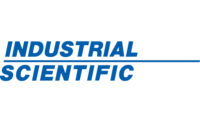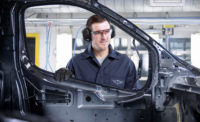Remote monitoring in real time
Analyze threat data, controls & alarm signals

Even in industrial settings – where nearly everything today is monitored and measured – safety managers and industrial hygienists confront the same challenges occurring at global operations: How to interpret and use that data to improve operations.
Industrial firms obviously need more than raw data. Relevant data helps make better decisions faster. Analyzed data can pinpoint small threats before they become big incidents that shut down operations.
Wireless gas-detection solutions
Widespread adoption of wireless-transmission technologies enable data to be sent continuously over-the-air. This has helped make data collection ubiquitous. Wireless gas-detection solutions – which use radio-frequency waves to transmit data from sensor monitors to a central operations computer for real-time data collection, aggregation and monitoring – have gained credibility at industrial sites such as chemical plants and refineries by improving safety.
If a gas is detected, alarms immediately sound at the exposure site and simultaneously at a remote operations center, where help can be summoned quickly. Remote monitoring in real time also identifies threats, such as a small leak, before it turns into a bigger problem that could affect the health and safety of workers or nearby communities.
But improved safety is only part of the story. Wireless gas-detection systems utilize sophisticated software to provide easy-to-setup and easy-to-use monitoring solutions that turn raw data into relevant, usable information that can save lives, mitigate risks, spot threat trends, and generate risk and predictive analytics.
Wireless system users can also share data and engage with remote experts in the same way doctors working in remote locations can work with medical-center specialists. If several chemicals combine during an incident, a specialist in another location can be brought in to consult on corrective measures or monitoring strategies while viewing information from the incident in real time.
Using data analysis to create actionable planning
Analyzing data to determine actionable information has become easier due to wireless technologies and new monitoring tools. Without wireless transmission capabilities, gas-detection tools typically store data locally on the instrument and require users to download the data at the end of a shift, a tedious effort.
This approach requires safety managers and hygienists to sift through the raw data to identify trends or alarm incidents for reporting purposes. The quantity of the data collected is often limited by the instrument’s data-storage capacity and the ability of managers to reasonably review the data set. With this approach, too much data can be daunting and cause “analysis paralysis.”
Wireless systems, on the other hand, can easily collect and aggregate thousands or millions of data points with automated tools that can dramatically improve the quality and reliability of the information derived from raw sensor readings. Wireless systems can send data samples at pre-determined time intervals, allowing managers to determine the correct level of data needed to monitor specific tasks.
Data now can be processed, analyzed and utilized for advanced predictive decision-making through the use of monitoring tools that can interpret millions of readings from a multitude of sensors and generate comprehensive safety and incident reports automatically.
More data points makes predictability and trend analysis more robust. Safety professionals can be proactive and make better decisions.
Contributing to “Big Data”
Data collected by today’s wireless gas-detection systems can be integrated with existing industrial automation and process-control systems, such as Supervising Control and Data Acquisition (SCDA) systems that monitor vital infrastructure and industrial processes.
This permits safety managers to extend their monitoring and process-control capabilities to include real-time threat data. Organizations can use big data to improve business intelligence. Predictive and trend analysis provides meaningful business insights, such as solutions that predict the direction and speed of a gaseous plume. Sophisticated software analysis tools, such as SAP Crystal solutions and IBM’s big data platform, handle very large quantities of raw data from virtually any industrial source.
Transportable “Big Data” solutions
Many safety professionals require dedicated gas-monitoring systems that provide data-management capabilities, but can be easily transported to various locations within a plant or moved from site to site.
At Thiess, Australia’s leading construction, mining and services contractor known for its proactive approach to safety, wireless gas-detection systems are used at large environmental remediation projects. The systems and the data collected are an integral tool to verify the effectiveness of occupational health and environmental controls to protect the health of workers, the community and the surrounding environment.
“One of the things wireless gas-detection systems give us is a robust real-time data set that provides confidence to both management, and the people working in these hazardous environments. They’re confident that the controls implemented are effective at providing a safe working environment and that monitoring is being performed responsibly,” said Kate Cole, an industrial hygienist and environmental engineer for Thiess.
The wireless systems used by Thiess transmit real-time data for atmospheric contaminants that send alarm notifications to engineers and industrial hygienists when atmospheric parameters change over pre-programmed limits. This enables a quick response by safety teams, who can converge on the site to implement additional localized controls.
“If we receive a community inquiry, for example, we can go back in time and provide data collected by our calibrated equipment confirming the conditions at a set location and time, which can go a long way to show we operated safely and in accordance to respective legislative requirements,” Cole said.
At the same time, the data is also used to generate regular reports detailing monitoring results and to identify trends to improve health and safety. Updated information about the effectiveness of the controls implemented on these projects is easily communicated to the workforce and to local communities. The monitoring effort records and logs monitored data, which can be accessed and reviewed later to address inquiries, mitigate risks, and potentially reduce ongoing costs and expenses as part of an ongoing improvement process for future projects.
As monitoring systems evolve, the use of analytical and predictive software solutions will accelerate. This will help organizations generate custom, site-oriented solutions to improve safety monitoring and operations.
One example is an application that tells users when to change the sensor in a detection instrument before it fails, so a new one can be ordered in advance. Predictive analytics can be used to track the sensor life expectancy based on use trends for that instrument, much in the same way desktop printers alert users when ink cartridges are low.
Utilizing the right monitoring and analysis tools eliminates the fear of having too much data. With today’s technologies, the more data safety managers and industrial hygienists possess, the more accurate the results are going to be. Once safety and industrial hygiene personnel can predict an incident, they can take action to prevent it. And preventing accidents helps reduce costs, but more importantly, save lives.
Looking for a reprint of this article?
From high-res PDFs to custom plaques, order your copy today!








